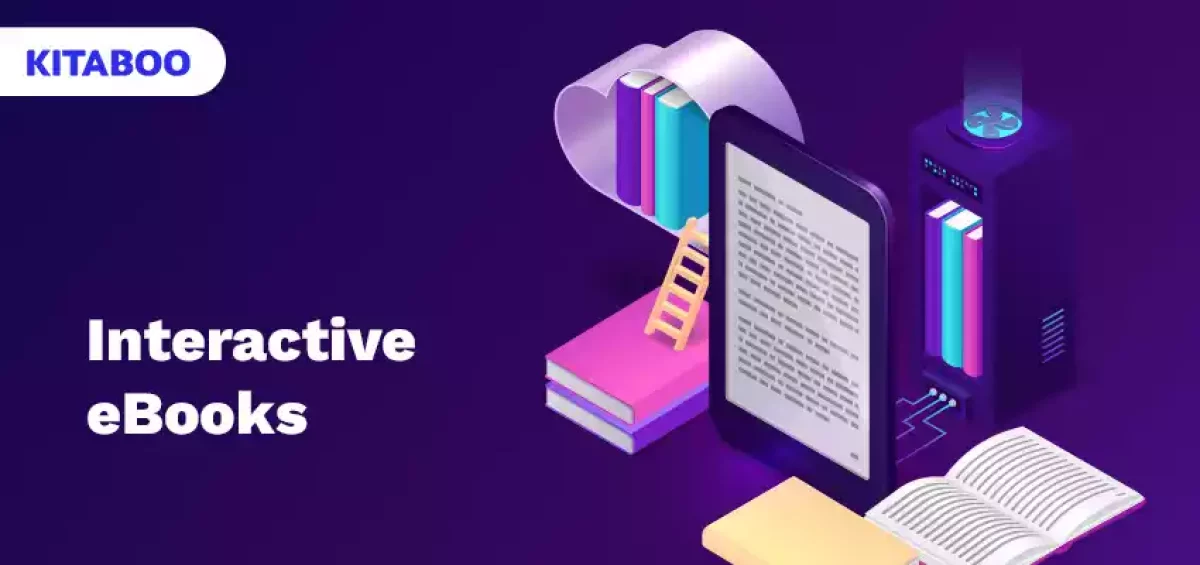Advancements in technology have transformed the face of digital reading from an experience emulating traditional media to one transcending it. Interactive eBooks offer readers an immersive and engaging experience by integrating multimedia elements such as videos, audio, animations, and interactive quizzes. These digital mediums transform reading into an interactive and active experience, allowing readers to not only passively consume content but truly dive into its depths.
Crafting interactive eBooks has benefits beyond entertainment value. They help authors and publishers adapt their content to different learning styles and provide engaging multimedia options. Auditory learners can benefit from audio narration instead of simply resorting to reading. Similarly, visual learners can access more information from interactive visuals, helping to ensure that content is accessible and engaging for a larger demographic.
In this blog, we will explore the rise of interactive eBooks, uncovering their benefits and tips that will help you make the most of a truly enriching and groundbreaking experience.
Table of Contents
I. The Rise of Interactive eBooks
II. The Benefits of Interactive eBooks
- Improved Reader Engagement
- Embracing Different Learning Styles
- Enhancing Creativity
- Providing a Competitive Advantage
III. Tips for Creating Interactive eBooks
- Plan Out All Interactive Elements
- Use the Right Tools and Platforms
- Integrate a Wide Variety of Interactive Elements
- Optimize Content for Distribution and Promotion
IV. Conclusion
The Rise of Interactive eBooks
Interactive eBooks incorporate multimedia elements such as videos, audio, animations, and interactive quizzes to toe the line between passive reading and active participation. In contrast to traditionally formatted eBooks, interactive eBooks allow readers to actively engage with their reading material and make the most of the experience.
Engaging with content in more meaningful ways allows readers to develop a deeper comprehension of the material. Multimedia elements and interactive features also allow authors to create more immersive experiences that capture readers’ imaginations in more ways than one.
Interactive eBooks on subjects such as the environment and human connections benefit greatly from the world-building potential of integrated multimedia. In essence, interactive eBooks provide new ways of creating engaging reading experiences and handle the following challenges often associated with traditional reading materials:
- Passive Reading: Interactive eBooks are able to engage readers more effectively through multimedia elements and interactive features.
- Limited Engagement: Interactive eBooks provide dynamic content that encourages deeper comprehension and discourse.
- Accessibility: Interactive eBooks are able to accommodate different preferences through customizable multimedia options.
- Knowledge Retention: Interactive eBooks can implement gamification elements and interactive storytelling to enhance retention and encourage readers to revisit previously read works.
- Competitive Edge: Interactive eBooks provide publishers with a competitive edge, offering more unique and engaging reading experiences.
The Benefits of Interactive eBooks
Interactive eBooks provide the following benefits to authors and publishers, helping them think outside the box in terms of traditional media:
1. Improved Reader Engagement
Interactive elements turn reading into a more immersive experience, drawing readers into the content and ultimately engrossing them fully in the material.
Digital textbook platforms such as KITABOO allow authors and publishers to integrate a variety of interactive and multimedia elements, including, but not limited to, images, audio, videos, and interactive quizzes.
2. Embracing Different Learning Styles
Interactive eBooks are able to adapt to individual reader needs and preferences by offering different multimedia options and elements.
For instance, auditory learners benefit from eBook narration. On the other hand, visual learners can learn better through interactive visuals and diagrams. Lastly, interactive activities like quizzes can help readers retain newly learned information more efficiently.
3. Enhancing Creativity
Authors and publishers can create unique interactive eBooks and experiment with different multimedia elements, interactive storytelling techniques, and gamification features to provide novel experiences to their audience.
4. Providing a Competitive Advantage
Interactive eBooks offer readers a more dynamic and engaging reading experience, which can help authors attract new audiences and retain existing ones. Publishers can also experiment with new revenue avenues, such as premium content options and licensing deals.
Tips for Creating Interactive eBooks
The following tips will help you add interactive elements effectively and make the most of this booming form of reading:
1. Plan Out All Interactive Elements
Take some time to carefully plan the interactive elements you want to integrate before moving straight into the content creation process. Proper planning will help you consider your eBook’s goals, your audience’s preferences, and how the interactive features you add will enhance the reading experience.
2. Use the Right Tools and Platforms
Choose the most appropriate tools to help you create interactive eBooks. Consider user-friendly platforms that provide a wide range of features and customization options. Digital textbook platforms such as KITABOO provide a seamless interface for the creation and distribution of personalized and interactive eBooks.
3. Integrate a Wide Variety of Interactive Elements
After carefully considering your preferred interactive mediums and choosing the most appropriate tools for implementing them, integrate a large variety of interactive elements into your eBook.
Adding different multimedia elements, quizzes, or widgets will make your eBook more palatable for the largest possible audience, helping enhance engagement.
4. Optimize Content for Distribution and Promotion
Make sure that your interactive eBooks work well with most of the popular e-readers and smartphone platforms, as these devices are where the majority of people tend to consume digital media. Ensure the best experience possible on these devices to leave your readers wanting more.
Make use of social media, email newsletters, and online marketplaces to promote your eBook effectively and spread the word about its unique selling points.
Conclusion
Interactive eBooks now represent the future of digital reading, offering authors and publishers a powerful way of expressing their creativity, improving engagement, and aiming for innovation.
Content creators can use powerful methods of storytelling to engage their audiences in an unforeseen way. The advent of interactive eBooks is helping authors break free from the barriers introduced by traditional books, allowing them to be more flexible with the content they create and introduce more efficient ways of reading and learning.
Digital textbook platforms like KITABOO offer authors and publishers a seamless and easy-to-use platform to create, publish, distribute, and market interactive eBooks. Multimedia elements and interactive activities such as quizzes allow authors to truly enrich the learning experience.
To know more, contact us today!
Discover How An Ebook Conversion, Publishing & Distribution Platform Can Help You
Kitaboo is a cloud-based content platform to create-publish & securely distribute interactive mobile-ready ebooks.
You May Also Like








